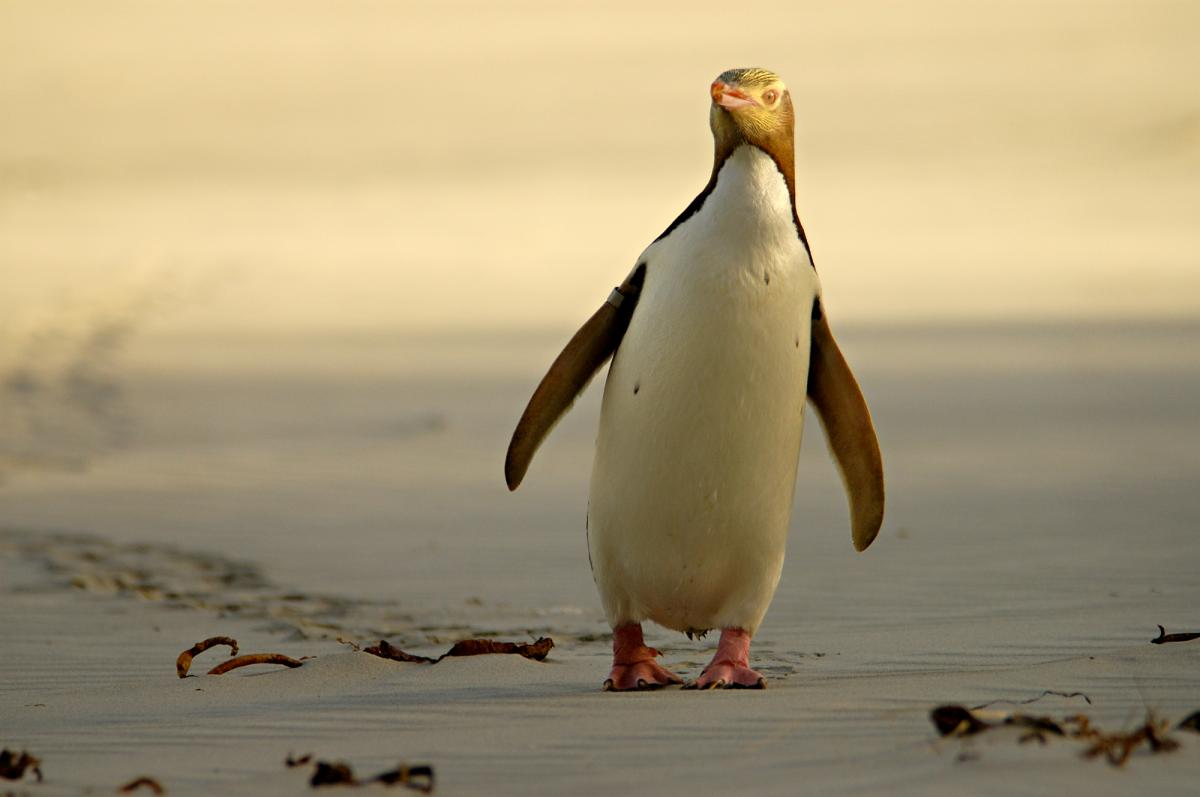Dunedin
When yellow-eyed penguins arrived in New Zealand just decades after the country's native waitaha penguin became extinct, it became one of the most rapid prehistoric animal turnovers ever found, University of Otago researchers say.
The team of researchers used carbon dating and DNA analysis of penguin remains from coastal New Zealand to establish the timing of the waitaha's extinction and the colonisation by yellow-eyed penguins from the subantarctic.
University of Otago postdoctoral research fellow Dr Nic Rawlence, who carried out the study, said the combination of ecology, archaeology and DNA in this way was new and was also being used to investigate if similar patterns exist with New Zealand sea lions, Stewart Island shags, elephant seals and fur seals.
Previous research had shown at the time of human arrival, New Zealand was inhabited by the waitaha penguin. ''Hunting and habitat change apparently caused the extinction of this unique mainland penguin, before the yellow-eyed penguin later arrived here from the subantarctic,'' Dr Rawlence said.
The new dating study showed waitaha went extinct around the same time as the giant flightless moa, within 200 years of Polynesian settlement of New Zealand - before 1500 AD. The yellow-eyed penguin then replaced the extinct penguin within about 20 to 30 years, in the early 1500s. ''It's one of the most rapid biological turnovers ever documented.''
Associate Prof Ian Smith, who was also involved in the study, said the very rapid biological shift implied a substantial change in human pressure around that time. ''Interestingly, recent archaeological studies similarly suggest that the Maori population in southern New Zealand declined around 1500 AD, and coincided with a major dietary shift.''
Dr Rawlence said if there had not been the dietary shift from large animals to fish and shellfish, yellow-eyed penguins would not have been able to fill the niche left by the waitaha. ''Yellow-eyeds would have arrived and then become extinct if there hadn't been that change.''
The near absence of the yellow-eyed penguin from the mainland before the extinction of the waitaha was similar to what happened to New Zealand's sea lions.
A University of Otago study published last year found today's sea lions replaced an extinct prehistoric New Zealand sea lion. The Marsden and Allan Wilson Centre-funded research on penguins included team members from the Universities of Auckland, Otago, Adelaide and Oslo, as well as Canterbury Museum and Te Papa.
The team's findings were published this week in the leading international journal Quaternary Science Reviews.
source


















No comments:
Post a Comment